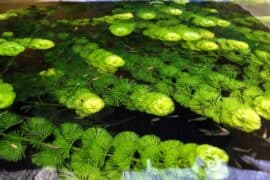Ligurian crocus
(Crocus ligusticus)

Description
Crocus ligusticus, commonly known as Ligurian Crocus or Ligurian Saffron, is a flowering plant species that belongs to the Iridaceae family. It is native to the western Mediterranean region, specifically the Ligurian Alps in Italy and the Maritime Alps in France. This plant is prized for its bright purple flowers and its use as a source of saffron, a popular spice used in cooking and medicinal practices. Taxonomy: Crocus ligusticus was first described by the botanist Gaspard Bauhin in 1623, and it was later classified under the genus Crocus by Carl Linnaeus in his 1753 publication "Species Plantarum." The species name, "ligusticus," refers to the plant's origin in the Ligurian Alps. Description: Crocus ligusticus is a small herbaceous plant that grows up to 15 centimeters in height. It has a corm, which is a bulb-like structure that stores food and nutrients for the plant. The leaves are narrow and grass-like, and they emerge from the corm at the base of the plant. The flowers are funnel-shaped and range in color from light purple to dark violet. They have three stamens with bright orange anthers, which are the reproductive structures of the flower. Habitat and Distribution: Crocus ligusticus is native to the western Mediterranean region, specifically the Ligurian Alps in Italy and the Maritime Alps in France. It grows in mountain meadows and rocky slopes, at elevations ranging from 500 to 2000 meters above sea level. This plant prefers well-drained soil and full sun exposure. Cultivation: Crocus ligusticus is cultivated for its ornamental value and its use as a source of saffron. It is a hardy plant that can tolerate cold temperatures and dry conditions. The corms are planted in the fall, and the flowers typically bloom in the spring. The flowers are harvested early in the morning, before they have fully opened, and the stigmas are carefully removed by hand. It takes approximately 150 flowers to produce one gram of saffron. Uses: Crocus ligusticus is primarily used as a source of saffron, which is a popular spice used in cooking and medicinal practices. Saffron is known for its distinct flavor and aroma, and it is used in a wide range of dishes, including paella, risotto, and bouillabaisse. It is also used in traditional medicine to treat a variety of ailments, including depression, anxiety, and menstrual cramps. In addition to its use as a spice, Crocus ligusticus is also grown for its ornamental value. The bright purple flowers are a popular addition to gardens and flower beds, and they can be used in cut flower arrangements. Conservation: Crocus ligusticus is listed as a vulnerable species by the International Union for Conservation of Nature (IUCN). The main threats to this species are habitat loss due to urbanization and agriculture, as well as over-harvesting for saffron production. Efforts are underway to conserve this species through habitat restoration and the establishment of protected areas. Conclusion: Crocus ligusticus is a valuable plant species that is prized for its ornamental value and its use as a source of saffron. It is native to the western Mediterranean region, where it grows in mountain meadows and rocky slopes. This species is vulnerable to habitat loss and over-harvesting, and efforts are underway to conserve it.
Taxonomic tree:







